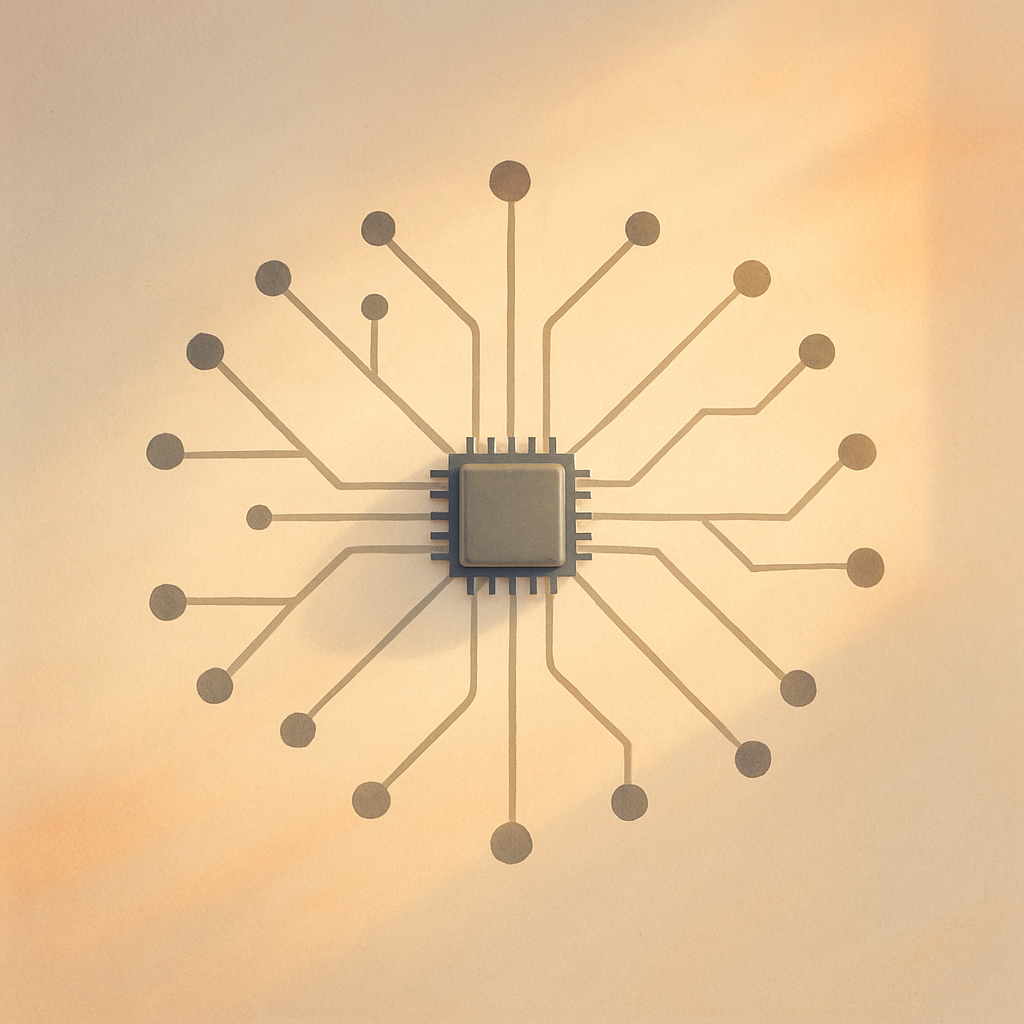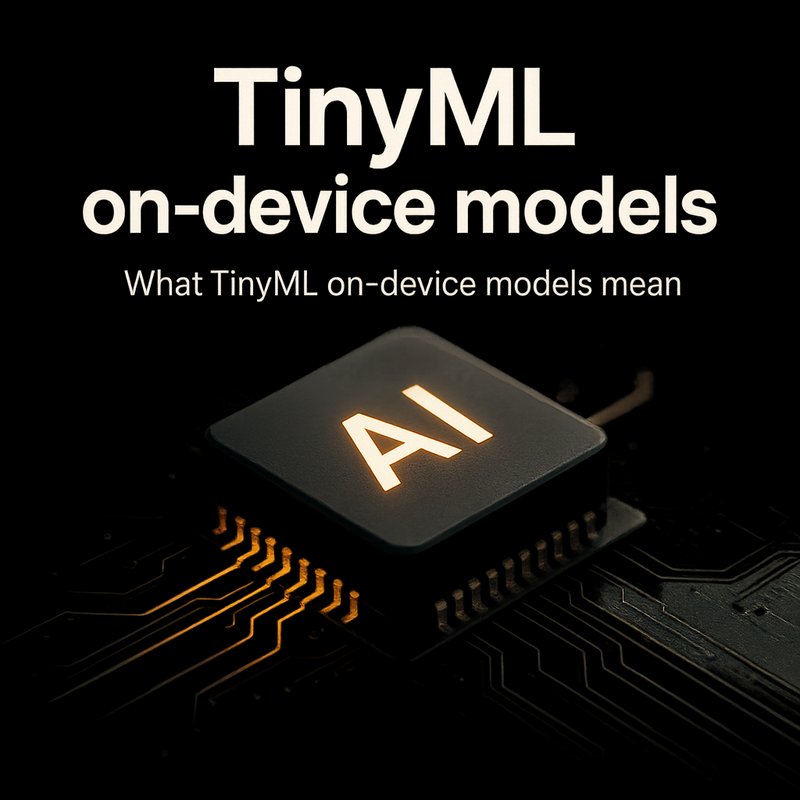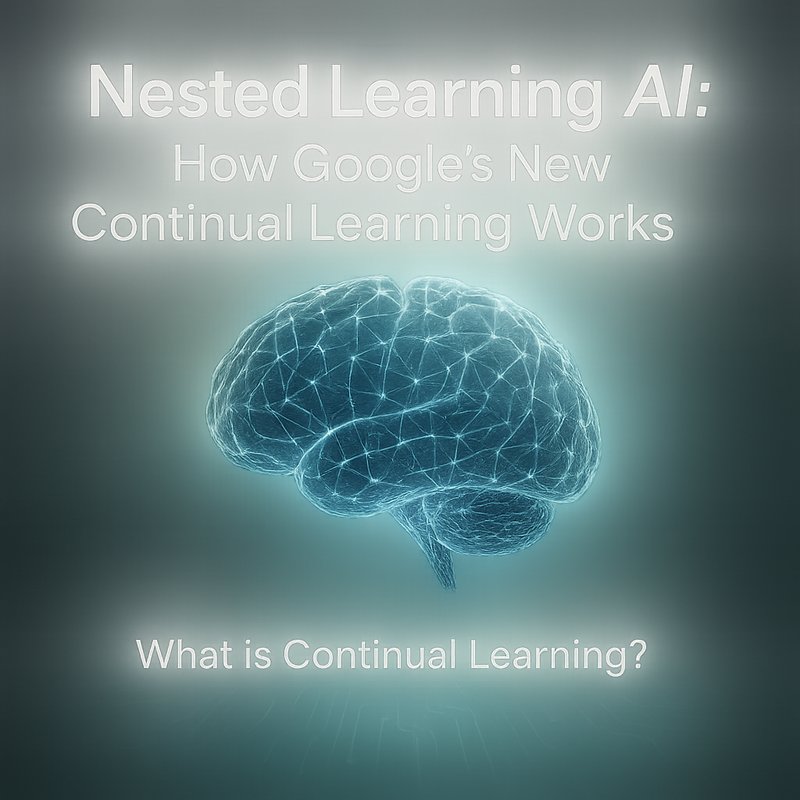TinyML on-device models bring smart AI to tiny gadgets like sensors, watches, and home devices.
This article explains what TinyML on-device models are, why they matter, and how to build and run them with easy steps and real examples.
You will learn tools, tips, and common traps to avoid.
By the end you will know how to get useful AI working on small hardware without big servers.
What TinyML on-device models mean
TinyML on-device models are small machine learning models that run directly on tiny hardware.
Think of a sensor that listens for a cough or a door sensor that spots unusual motion.
The model runs on the device itself, not in the cloud.
That makes apps faster, cheaper, and private.
Why do people pick TinyML on-device models?
Because devices often cannot reach the cloud, have bad Wi-Fi, or must keep data private.
Also, local models save battery and cut network costs.
Plus, they keep working when the internet is down.
Why TinyML on-device models matter now
Phones and cloud are great, but small devices need different answers.
TinyML on-device models give us AI where the action is.
Here are the main reasons:
- Privacy. Data never leaves the device, so personal stuff stays private.
- Speed. No waiting for the network means instant responses.
- Cost. No cloud compute bills for every prediction.
- Offline use. Devices keep working in remote places.
- Less bandwidth. Small updates and occasional model patches beat streaming data all day.
If your product needs real-time decisions or tight privacy, TinyML on-device models are often the right choice.
Common TinyML use cases
TinyML on-device models work well for many simple but useful tasks.
Here are practical examples you may see in real projects:
- Wake word detection on a voice device.
- Anomaly detection on a pump or motor via vibration sensors.
- Fall detection on a wearable.
- Keyword spotting for smart home controls.
- Counting people entering a room using a camera and tiny vision model.
- Detecting coughing or loud events in a room without recording audio.
These are small tasks, but they matter. Tiny models do them well and cheaply.
How TinyML on-device models work at a glance
TinyML on-device models go through a few basic steps.
This simple flow helps you plan a project:
- Collect data from the device sensors.
- Train a model on a desktop or cloud machine.
- Compress the model using quantization or pruning.
- Convert the model to a format the device understands.
- Deploy the model to the device.
- Test on real hardware.
- Monitor and update when needed.
Each step needs tools and checks. I will walk through them next.
Tools and frameworks for TinyML on-device models
There are many tools that make TinyML on-device models possible.
Pick ones that match your device, language, and skills.
-
TensorFlow Lite and TensorFlow Lite Micro
- Good for many microcontrollers and single-board computers.
- Has converters and runtime libraries.
-
PyTorch Mobile and TorchScript
- Works well for mobile and some embedded platforms.
-
ONNX Runtime and ONNX
- Lets you convert models from many frameworks.
-
Edge Impulse
- A cloud service that helps collect sensor data, train, and deploy models to devices.
-
Apache TVM
- Compiler that optimizes models for many hardware targets.
-
CMSIS-NN
- Optimized neural network kernels for Arm Cortex-M MCUs.
-
TensorFlow Model Optimization Toolkit
- Helps with quantization, pruning, and clustering.
-
TinyML tools like uTensor, TFLM (TensorFlow Lite Micro), and microTVM.
-
Platforms like Arduino, Raspberry Pi, and ESP32 are common hardware choices.
If you use a product like Neura ACE, you can manage content and pipelines, and you might link TinyML results into dashboards on your site at https://meetneura.ai/products.
Picking the right hardware
Small models still need some compute. Choose hardware that fits your task.
- Microcontrollers (like Arm Cortex-M0/M4/M7) for ultra-low power tasks.
- Single-board Linux devices (Raspberry Pi) for slightly bigger models or tiny vision.
- Edge TPUs and NPUs for fast on-device inference with low power.
- Audio or sensor front-end chips that do pre-processing can help.
Match the model size and latency needs to the hardware specs: RAM, flash, CPU, and power.
If you use private or secure scanning, check tools like Neura Keyguard AI Security Scan at https://keyguard.meetneura.ai for detecting leaked keys during development.
Model design for TinyML on-device models
Designing a model for small devices means planning around limits.
Follow these simple ideas:
- Keep models tiny. Use small networks like mobile-style CNNs, small RNNs, or tiny transformers with few layers.
- Use quantization to reduce size and speed up math.
- Prune unneeded weights after training.
- Use feature extraction on device to lower model work. For example, compute MFCCs for audio before the model runs.
- Aim for a few kilobytes to a few megabytes, depending on hardware.
Now, a quick checklist for training:
- Start with desktop training.
- Use data augmentation to make the model robust.
- Validate on a test set that matches the device sensor quality.
- Try quantization-aware training if accuracy drops when you quantize.
Quantization and pruning: make models small and fast
Quantization converts model weights from float to int8 or int16.
This cuts size and speeds up inference.
- Post-training quantization is fast and often works.
- Quantization-aware training helps if post-training gives too much accuracy loss.
- Pruning removes weights with low value. This trims size but needs careful tuning.
Use TensorFlow Model Optimization Toolkit or PyTorch quantization tools.
Test on device after each change.
Converting and compiling models
After training and size tricks, convert models to a runtime format.
- Convert TensorFlow models to TFLite with the TFLite converter.
- Use TFLite Micro for microcontroller targets.
- Convert PyTorch models to TorchScript or ONNX, then to your device runtime.
- Use TVM to compile and optimize model kernels for specific chips.
This step often needs cross-compilation tools and a small test harness to run on device.

Building a TinyML pipeline: step-by-step
Here is a simple pipeline you can copy:
-
Data pipeline
- Record sensor data on a laptop or via the device.
- Label and split data into train, validation, and test.
-
Training pipeline
- Train a baseline model with common frameworks.
- Use data augmentation and early stopping.
-
Compression pipeline
- Apply pruning and quantization.
- Run a validation pass to measure accuracy loss.
-
Conversion pipeline
- Convert to TFLite, ONNX, or other formats.
- Use TVM to compile if needed.
-
Deployment pipeline
- Flash model to the device or use an OTA update system.
- Use a CI job to bundle firmware and model files.
-
Monitoring pipeline
- Collect logs or simple counters from devices.
- Push periodic reports to a server or dashboard.
If you want to automate content and reports around this work, Neura ACE can help you summarize findings and keep docs up to date at https://ace.meetneura.ai.
Testing on real hardware
Testing on a laptop is not enough. Real sensors and noise matter.
Do this while testing TinyML on-device models:
- Run the model live on the device and gather predictions.
- Check latency and memory footprint.
- Test battery drain over a day.
- Test in real environments with expected noise.
- Test edge cases where the device might fail.
Record real results and adjust the model or preprocessing if the device performs worse than expected.
Monitoring and model updates
Devices need monitoring and safe updates.
- Keep a small logging channel so devices can send status updates.
- Monitor for concept drift if sensors change over time.
- Use safe OTA updates and version checks so a bad model can be rolled back.
- If privacy is critical, send only aggregated data, not raw inputs.
If you run many devices, you may want a central dashboard. Neura Brand Insider 247 can help track trends and alerts for devices and user feedback at https://brand-insider.meetneura.ai.
Security and privacy for TinyML on-device models
Security matters more when models are in the field.
- Encrypt model files on disk and during OTA.
- Protect API keys and secrets. Use tools to scan the code for leaks. Neura Keyguard AI Security Scan can find leaked API keys in frontend apps: https://keyguard.meetneura.ai.
- Limit debug logs to avoid leaking data.
- Use secure boot and code signing where possible.
For privacy, run only what you need on the device. If you must collect data, anonymize or aggregate it before sending.
Common problems and how to fix them
Here are typical traps when working with TinyML on-device models and quick fixes.
-
Model too big
- Try quantization, pruning, or a simpler architecture.
-
Latency too high
- Optimize code paths, use integer math, or pick faster hardware.
-
Accuracy drops after conversion
- Use quantization-aware training or tweak preprocessing.
-
Battery drain high
- Run inference less often, use interrupts, or add a motion trigger.
-
Overfitting to training data
- Add more variation, use augmentation, or collect more real-world samples.
-
OTA fails on many devices
- Add checksums and safe rollback routines.
Example project: wake word on a tiny speaker
Let us walk through a short example for a wake word system.
- Collect 10,000 audio clips including the wake word and many non-wake samples.
- Preprocess to MFCCs of 40 bands and 1 second windows.
- Train a small CNN with two conv layers and a dense head.
- Apply pruning and int8 quantization.
- Convert to TFLite and test on a Raspberry Pi and an ESP32 with a small mic.
- Measure latency and reduce model size if needed.
- Deploy via OTA to a field test group and collect false positive rates.
- Iterate based on field data.
This simple project shows the full loop from data to device to update.
Open source datasets and resources
Here are some useful links to start building TinyML on-device models:
- TensorFlow Lite: https://www.tensorflow.org/lite
- TinyML Foundation: https://www.tinyml.org
- Edge Impulse: https://www.edgeimpulse.com
- ONNX Runtime: https://onnxruntime.ai
- Apache TVM: https://tvm.apache.org
- Speech commands dataset and other public datasets from common ML sources
You can also find code examples and community projects on GitHub and discussion threads on Hacker News for testing ideas and getting feedback.
When not to use TinyML on-device models
TinyML on-device models are not always the right fit.
- Large NLP models that need lots of context usually belong in the cloud.
- Tasks that require big datasets and heavy compute are easier on servers.
- When you need perfect accuracy above all, cloud models with more compute may be best.
If you need a hybrid approach, consider a small model on device for quick checks and a cloud model for heavy work.
Next steps: build a small demo
Pick one device and one simple task.
Follow this short plan:
- Choose a device like an ESP32 or Raspberry Pi.
- Record 1000 examples for a simple classification.
- Train a small model on your laptop.
- Convert to TFLite and flash the model.
- Test and fix issues.
If you want to automate content, documentation, and rollouts, Neura ACE can help create guides and update pages automatically at https://ace.meetneura.ai.
Conclusion
TinyML on-device models let you add smart features to tiny devices without big cloud costs.
They protect privacy, cut latency, and reduce bandwidth.
Start small, test on real hardware, and use quantization and pruning to fit models into tight memory.
With the right tools and a clear pipeline, you can get useful AI running where it matters most.









